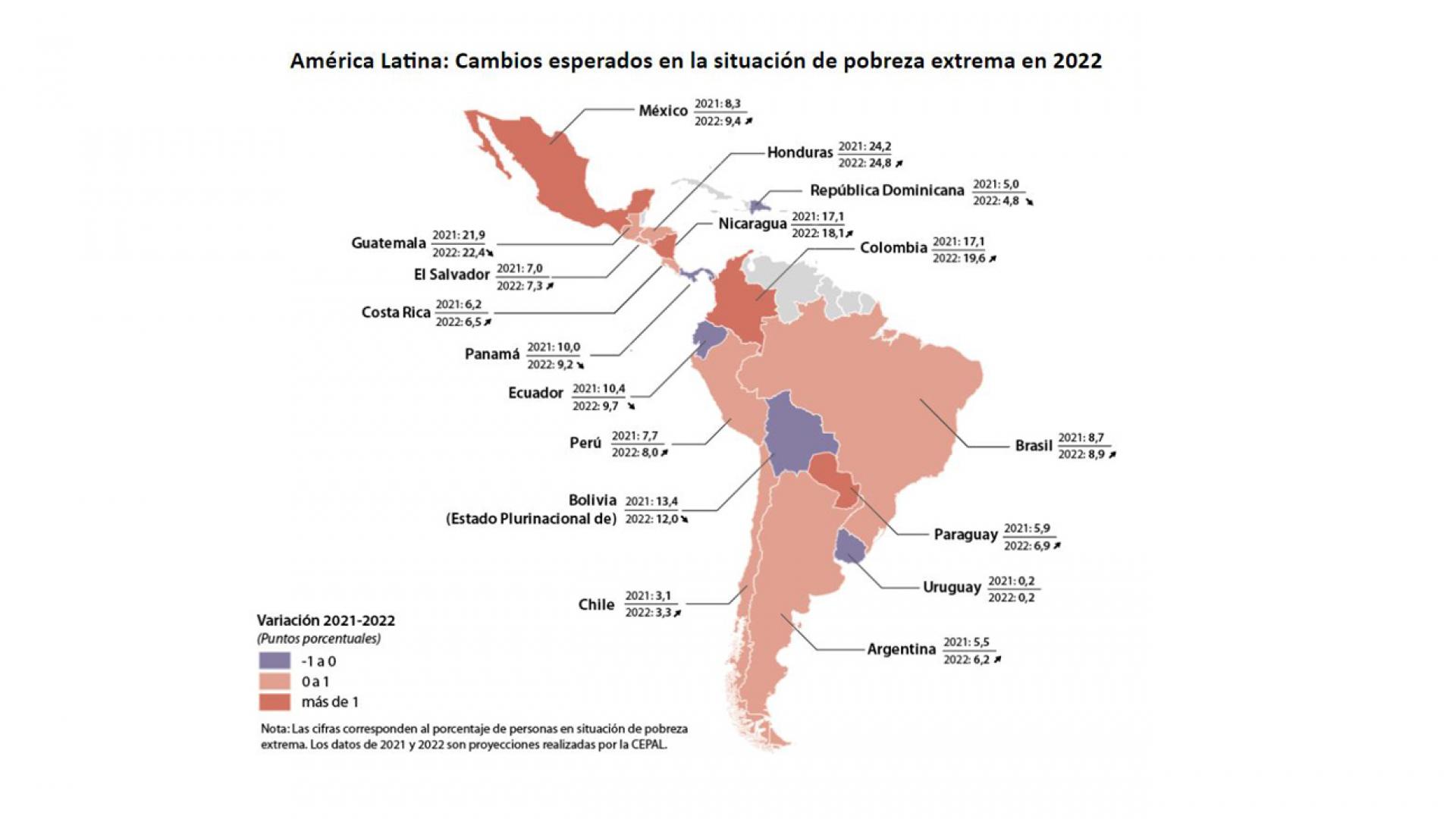The latest economic forecasts for Latin America are grim, and you don’t need a Ph.D. in economics to see why: The region is exporting very little and is drawing fewer and fewer foreign investments. According to a new World Bank study released Tuesday, entitled “The Promise of Integration,” the region’s economy will grow by only 1.4% in 2023, a rate that’s lower than expected. And Latin America’s annual growth rate in 2024 and 2025 will be only 2.4%, too little to make a serious dent in poverty rates. “Headwinds have picked up, and the 2023 outlook is substantially bleaker than 2022,” the international financial institution, based in Washington D.C., says.
In Mexico, where President Andres Manuel Lopez Obrador had promised growth rates of 4% a year, the economy is projected to grow by 1.5% this year, and 1.8% next year. That won’t be enough to provide jobs to the millions of young people who are expected to reach working age. Argentina’s economy is expected to show zero growth this year, and 2% growth next year. Brazil is projected to grow only 0.8% and 2%, and Colombia 1.1% and 2.8%, respectively. Chile, until not long ago the region’s economic star, is expected to suffer a contraction of 0.7% this year, and to grow by 2.1% next year.
Peru, despite its political crisis, is likely to grow by 2.4% this year and 2.8% in 2024, the study says. William Malone, the World Bank’s chief economist for the region, told me that several external factors are causing the slowdown, including weak global economic growth, higher U.S. interest rates that make it more expensive for the region to borrow in dollars and the relatively low prices of its commodity exports. But there are key self-inflicted problems that keep the region from growing faster, he added. Among them is a steady decline in foreign investments. With the exception of Mexico, foreign direct investments to the region have been falling both in absolute terms and as a share of all such money inflows into the developing world. Total foreign investments to the region have dropped by 35% over the past decade. In the 1990s., Latin America accounted for 43% of all global investment flows to emerging countries, but that figure has fallen to about 15% today, the bank says.
And Latin America’s exports remain “among the lowest in the world” in relation to the region’s economy. Exports have remained stagnant over the past 20 years; the bank’s study says. Malone told me that, considering the region’s closeness to the U.S. market and its trade agreements, “It is exporting much less than what one would expect.” While merchandise exports amount to 65% of Middle Eastern and Northern African countries’ total exports, and 43% of sub-Saharan Africa’s exports, they represent only 37% of Latin American exports, according to the bank’s estimates. “There are still too many hurdles to exporting and importing,” Malone said, referring to Customs and other barriers. “The costs of trading are four times bigger than in northern [developed] countries.
That obviously makes it harder to export.” Alberto Bernal, chief global strategist of XP Securities, a private investments firm, told me that the bleak World Bank forecast for the region is similar to that of most private economists. “There’s a consensus that it’s going to be a bad year in terms of growth,” he said. But the World Bank report also says there are huge potential opportunities for the region in the context of growing U.S.-China tensions. Many U.S. multinationals are eager to move their factories away from China and closer to the U.S. market, a move economists call “nearshoring.” Mexico, Central America, Colombia and other nearby countries could become the world’s new manufacturing centers.
In addition, the global shift toward greener energy sources could become a huge economic boon for Latin America, because of the region’s huge wind, water and solar energy-production potential, the study says. Summing up, Latin America has fantastic opportunities to attract investments, reduce poverty and grow. It mostly has itself to blame for not taking advantage of them. (https://www.miamiherald.com/news/local/news-columns-blogs/andres-oppenheimer/article273998595.html)



































